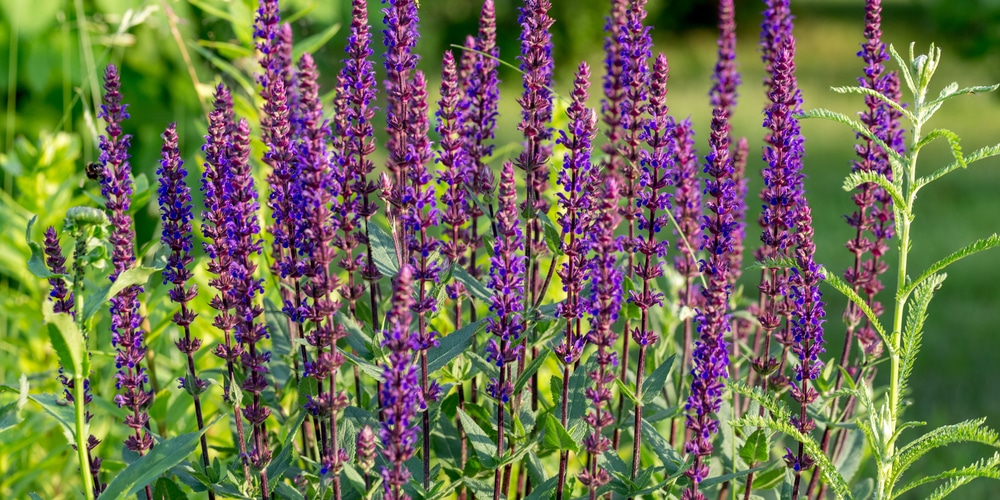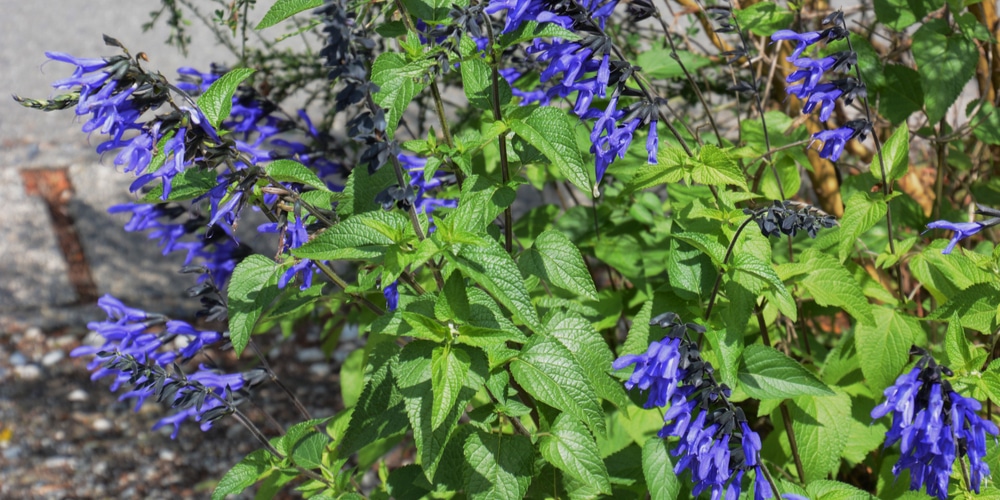Salvias are popular plants with gardeners because they are rugged and survive in most conditions. On top of that, they produce beautiful flowers that brighten up any garden.
Despite their popularity, gardeners face several common problems with salvias. Keep reading to discover these problems and how you can solve them.
What Is a Salvia?

Salvia is a flowering plant that belongs to the mint family. There are over 900 species of salvias, and they can be found all over the world. Salvias are known for their showy flowers, which come in various colors, including pink, purple, blue, and white.
The most popular type of salvia is Salvia splendens or scarlet sage. This plant is native to Brazil and grows best in USDA hardiness zones 9-11.
Scarlet sage can reach up to 2 feet and produce bright red flowers. It blooms from early summer to fall and does not tolerate frost.
Common Problems With Salvias
These are some of the most common problems that gardeners face with salvias.
Not Flowering
One of the most common problems gardeners face with salvias is that they stop flowering. A lack of flowers can be frustrating, especially if you hope to enjoy their vibrant blooms all season long.
There are several reasons why your salvia might not be flowering. One possibility is that it’s not getting enough sunlight. Salvias need at least six hours of sunlight per day to bloom. If your plant is shady, try moving it to a sunnier location.
Another reason your salvia might not be flowering is that it’s not getting enough water. After you water your salvia, check the soil. If the ground is still dry, you should pour more water.
Finally, your salvia might not be flowering because it’s not getting enough nutrients. Feed your plant with a balanced fertilizer every two weeks to encourage blooming.
Leggy Plants
Another common problem with salvias is leggy growth. Leggy growth occurs when the plants become too tall and thin and usually don’t get enough sunlight.
To prevent leggy growth, ensure your plant gets at least six hours of sunlight daily. You can also prune back the stems to encourage bushier growth.
White Powder on the Leaves
If you notice a white powder on the leaves of your salvia, it’s likely powdery mildew. Powdery mildew is a fungal disease affecting many plants, including salvias. It usually occurs in humid or wet conditions.
Water your plant at the base instead of overhead to prevent powdery mildew. Watering at the bottom will help to keep the leaves dry. You can also try to increase air circulation around your plant by pruning it back.
If powdery mildew is already present, you can treat it with a fungicide. Be sure to follow the instructions carefully and apply the fungicide in the early morning or evening when there is less sunlight.
Wilting Leaves
If the leaves on your salvia plant are wilting, it’s likely due to a lack of water. These plants need to be kept moist but not waterlogged. Let the soil dry out slightly in between watering.
Pests
Salvias are also susceptible to pests, such as aphids, whiteflies, and spider mites. These pests can damage the plant and reduce its growth.
To get rid of pests, start by spraying your plant with water. The water will remove some insects and help keep the plant healthy. You can also try using a pest control product designed explicitly for aphids, whiteflies, or spider mites.
Be sure to follow the instructions carefully and apply the product in the early morning or evening when there is less sunlight.
Wrap Up
Salvias are a beautiful addition to any garden. But like all plants, they can sometimes face problems. The most common issues with salvias are not flowering, leggy growth, white powder on the leaves, wilting leaves, pests, and mold or mildew.
By following the tips in this article, you can help to prevent or solve these problems and enjoy a healthy salvia plant all season long.
